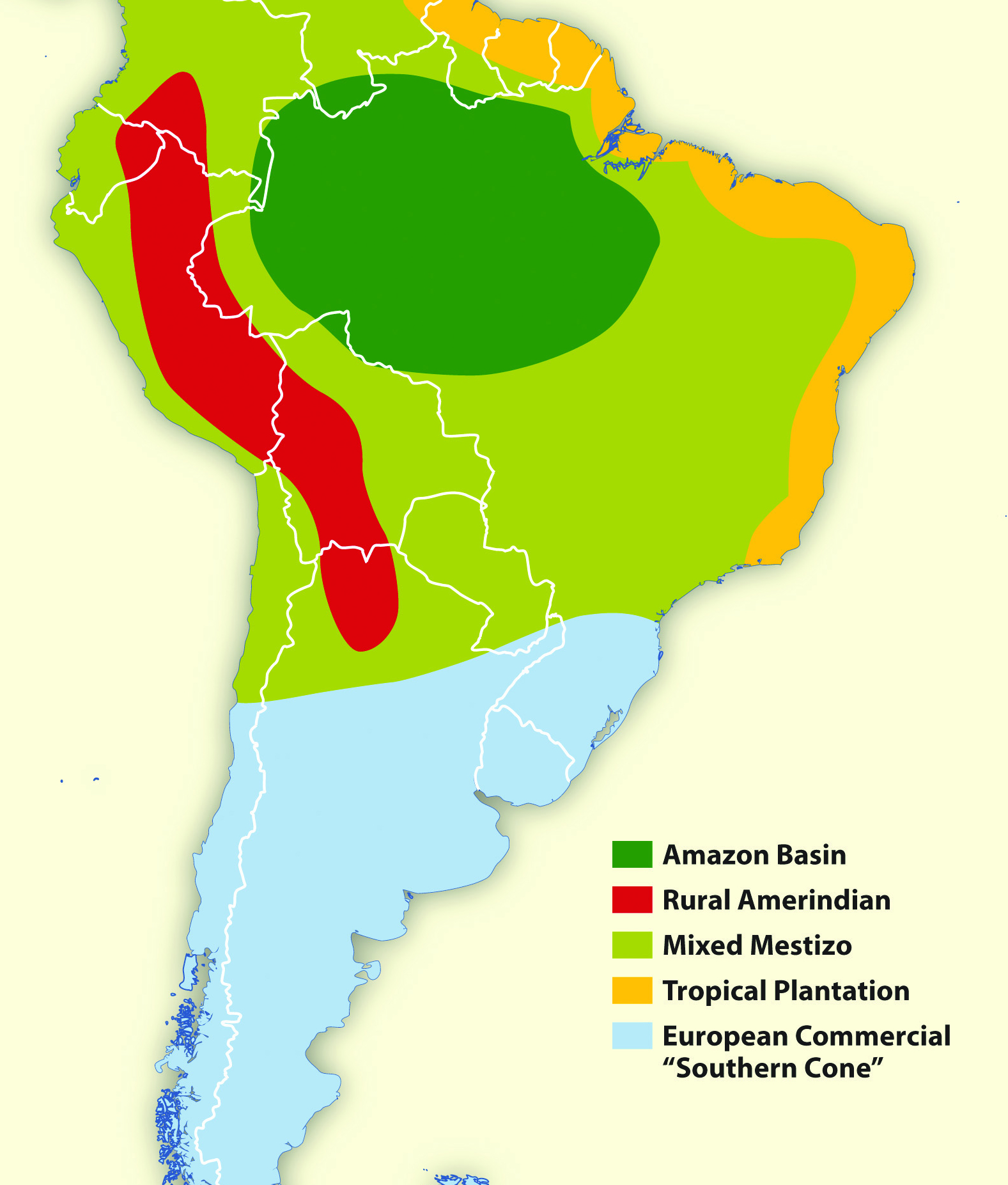South America Q+A
What is the Treaty of Tordesillas and how did it shape South America in terms of its human related features?
Signed In 1494 CE between Spain and Portugal in the purpose of dividing the “new world” territories between these two empires. This created the east/west border between Spanish speaking countries and Portuguese speaking – Brazil.
Which part of the continent is unique regarding colonization? Who were the colonizers, and what was their motivation to colonize this region?
The small region of the Guianas, colonized by Great Britain, Dutch settlers, and France. These colonies, with plantations and many slaves labouring, were important for the colonizers on the coast of the Caribbean where they had additional important colonies and trading routes.
Cultural regions of South America: Assuming the continent can be divided into 5 cultural regions, list the different regions, their location, and describe their characteristics.
1. Tropical Plantation Region - Located along the north and east coast of South America is characterised by tropical climate and agricultural operations, which is linked to the human composition - many descendants of African slaves and even people of Asian origin (which were brought as labourers after the abolishment of slavery).
2. Rural Amerindian Region - includes the countries (or portions) of Ecuador, Peru, and Bolivia. The ruling Mestizo class concentrated mainly in the main cities, while a large population of native Amerindians distributed primarily in the mountainous Andies. It is one of the poorest regions of South America
3. Amazon Basin - characterized by a type A climate, is the least-densely populated region of South America and is home to isolated Amerindian groups. Although unique and sensitive, this region is under great pressure and risk by companies with commercial interests due to its richness in natural resources.
4. Mixed Mestizo Region - includes the coastal area of the west and the interior highlands of the north and east. Includes a majority of people who share a mixed European and Amerindian ethnicity. Not as poor as the Rural Amerindian Region.
5. European Commercial Region (Southern Cone) - includes Chile, Argentina, Uruguay, and parts of Brazil. Dominated by people from European origin (not only Portuguese and Spanish), living mostly in big cities. Characterised by fertile land, industry and good connections to global trade.

Describe the typical characteristics of urban development and how it shapes the social reality in many parts of South America.
Many cities in South America, which is very urbanised (the big majority live in cities) follow a similar model of urban development and structure:
A central business district (CBD), an area of middle-class housing around the CBD, a spine (often connected to major retail areas) surrounded by the elite-wealthy residential sector, and an outermost ring of peripheral-poor squatter settlements. This pattern of development is tightly liked and facilitates the common social structure and inequality in big parts of the region. In several countries in the region Prime Cities exist - meaning the largest city is more than twice the size of the second largest in the country. Montevideo in Uruguay is one good example.
Describe the impacts globalization and international trade on the countries of South America
The colonial history and fragmented character of South American settlement created a reality of dependence on European countries and lack of an integrated continental trade network. Much of the continental resources were exploited by countries outside the continent, which cooperated amongst themselves in many cases. The establishment of the EU and the North American Free Trade Agreement (NAFTA) , which did not consider the benefit interests of South American countries, was a driving force for continental governments to start cooperating for the best of their own interests. An example of such cooperation is the Union of South American Nations (UNASUR) that oversees the customs unions and trade agreements within the realm. The level of trade between the countries of South America and the United States and Europe varies widely.